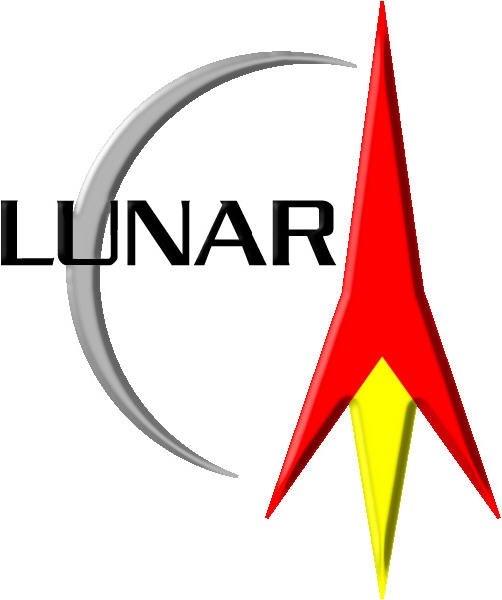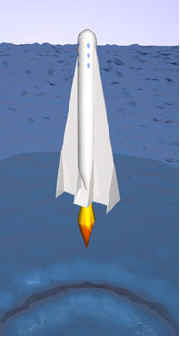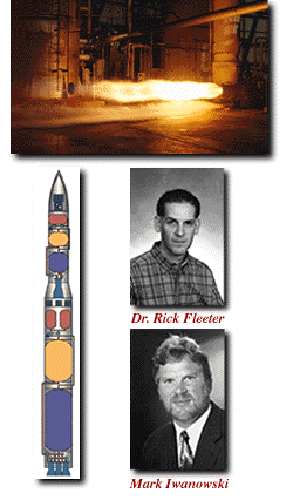 LUNAR’clips
LUNAR’clips
Livermore Unit of the National Association of Rocketry January/February 2001
Copyright © 2001 by LUNAR, All rights reserved.
X-Prize Entrants: Advent Launch Services and AeroAstro, LLC
Geoff Canham, LUNAR #493
Advent
The X-Prize is a competition to encourage Space Tourism, promising a $10 million prize to the first team to demonstrate a practical sub-orbital system suitable for public use. Full details of the contest are available on their Web site at www.xprize.org. I wrote an article some time back, mentioning a couple of the entrants that could be reasonably easily modeled, but I noticed that the list of entrants had grown, so I thought it might be interesting to take a look at them again.
 The
first entrant listed is from Advent Launch Services, based in Houston, Texas,
with team led by Jim Akkerman, and including a group of NASA retirees. Their
Advent rocket is planned to be fuelled with oxygen and natural gas, and is
designed to lift off vertically from a water launch site, and to glide back to a
landing on water. The company aims to establish a fully-commercial space
program, and they state their plan as follows (this is quoting from their Web
site, www.ghg.net/jimakkerman):
The
first entrant listed is from Advent Launch Services, based in Houston, Texas,
with team led by Jim Akkerman, and including a group of NASA retirees. Their
Advent rocket is planned to be fuelled with oxygen and natural gas, and is
designed to lift off vertically from a water launch site, and to glide back to a
landing on water. The company aims to establish a fully-commercial space
program, and they state their plan as follows (this is quoting from their Web
site, www.ghg.net/jimakkerman):
“The Advent fleet consists of a group of vehicles with the same design, differing only in size. All the development is performed on the first vehicle, which is the smallest, and is used as the initial orbiter. Successive vehicles are each about 2 and ½ times larger than the previous vehicle, and can be used as boosters or orbiters. A group of 4 vehicles can be used to assemble 3 successively larger 2-stage launchers, delivering 5,000, 25,000, and 125,000 lb. payloads.”
Their description of the flight sequence of the sub-orbital mission is as follows:
“A speedboat delivers you to the launch site. When the floating rocket is ready for launch, the passenger module is lifted aboard and the speedboats move away. Next, the rocket delivers you to space and you enjoy about 4 minutes of zero-gravity. After, the rocket glides back to land at the launch site like a seaplane.”
AeroAstro, LLC
The second entrant is the AeroAstro team, based in Herndon, Virginia, led by Dr. Rick Fleeter, and they are planning a fairly conventional rocket. Their Web site, www.aeroastro.com, shows them to be already a seasoned company in space exploration. The company has been involved in developing a number of satellites, and other space systems, since 1988.
Their X-Prize entry is called the PA-X2, and is described as employing “a LOX/Kerosene pressure fed engine modified from a 20 year old NASA design. The vehicle is a conventional vertical launched rocket, but built with carbon epoxy composite tanks. Launch is from a simple milkstool pad with a rail to stabilize the rocket during the low-g liftoff. A deployed parafoil glides the entire vehicle back to a site adjacent to the launch site where a horizontal landing is cushioned with airbags” (quoted from their entry on the X-Prize Web site).
